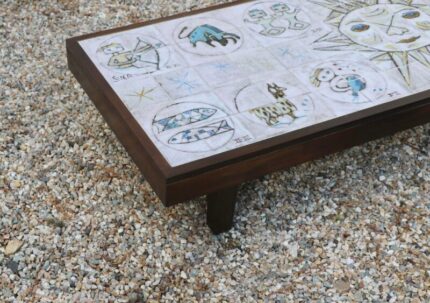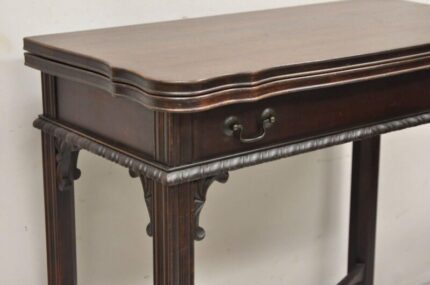Vintage Design
Koncz Vilmos (1932 – 2006). He started painting at the age of 30, using the following techniques: charcoal, pastel, oil. He has had solo exhibitions eight times in Budapest, and his works have been featured in seventeen group exhibitions worldwide. He was an experimental creator. Its more than 420 works include glass mosaics, terracotta, copper embossing and furniture carving. After his death, most of his oeuvre was “lost”. A decade and a half passed from painting to the first carvings. Middle Eastern and African culture had a major impact on his further artistic work. Traveled and created in Baghdad, Kuwait, Beirut and Tanzania. He became acquainted with the ancient folk art of the Makonde tribe, with carvings of ebony and ivory, which changed his creative career. When he made an authentic bracelet out of ivory, decorated with African motifs, the members of the tribe welcomed him among themselves. He became the tribe’s “Mister Vili.” An exhibition of his painted paintings was held at the Kilimanjaro Hotel. He learned the machining of copper from the Arabs and the making of glass mosaics, and the tricks of jewelry making from the Hindus. He had forty large sculptures erected in various settlements of Hungary, mostly multi-field, made with a circular carving technique. Everything from ornaments on the table to the three-meter-high monument was found in his oeuvre. The Tiszakürt Arboretum also houses two wooden sculptures made of circular carvings: Tasso and the Tanzanian family tree. Donated works of his hometown: the 1956 headboard, the “Jászok” and “Kunok” (Old Hungarian Tribes), the “Flute”, the “Kolompolás” (Ringing the Bell) and the “Winged Altar”. In the 1980s, he also made carvings for the Budapest Zoo and Botanical Garden. His Ars Poetic was: “I do what I love, which drives from within, because I want to leave marks behind that I once existed and perhaps not uselessly” (2002). The term “Brutalist” originated from Le Corbusier’s Cité Radieuse housing development in Marseille, France, designed in the late 1940s. It was awash in béton brut, which translates to “raw concrete.”… The brutalist architecture was popular from the 1950s to the mid-’70s and most often institutionally commissioned: many brutalist structures are schools, churches, public housing, and government buildings. This new wave is not only influenced famous architects but also cabinetmakers, designers, artists and creators around the Globe. This “Brutalist” chair from the 1940’s-1950’s made of hand carved massive wood, decorated with floral and figurative elements, such as trees, houses, humans and the sun.
| Design Period | 1960 to 1969 |
|---|---|
| Year | 1960 |
| Production Period | 1960 to 1969 |
| Style | Vintage, Brutalist |
| Detailed Condition | |
| Product Code | MBH-1234426 |
| Restoration and Damage Details |
Wear consistent with age and use.
|
| Materials | Wood |
| Color | Brown |
| Width |
79 cm 31.0 inch |
| Depth |
51 cm 19.7 inch |
| Height |
100 cm 39.4 inch |
| Weight Range | Standard — Between 40kg and 80kg |
| Duties Notice | Import duty is not included in the prices you see online. You may have to pay import duties upon receipt of your order. |































Reviews
There are no reviews yet.